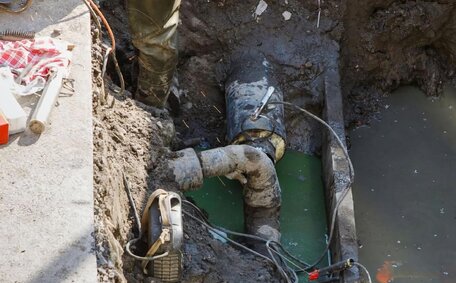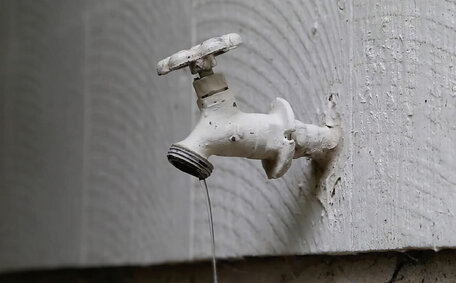Introduction: An Overview of Using Bleach for Drain Cleaning
Clogged drains are a common nuisance that many homeowners face. Is using bleach down the drain an effective method for clearing blockages, and is it safe for your pipes?
When simple solutions like plunging don’t work, some turn to harsh chemicals like bleach in an attempt to break up the clog.
This article evaluates the efficacy and safety of bleach for unclogging drains. We’ll look at whether it actually works to clear clogs, as well as the potential risks and downsides. Eco-friendly alternatives will also be covered, comparable to the effectiveness you would get from bleach use in solutions.
By the end, you’ll have a balanced understanding of the facts around introducing bleach into drain cleaning. With appropriate precautions, certain clogs can be dissolved using bleach, though it’s not without risks. But there are also safer, more environmentally options to consider first before turning to harsh chemicals.
How Does Bleach Interact With Clogs to Clear Blockages?
Bleach effective for your shower drain clog comes from its powerful chemical properties. Sodium hydroxide or sodium hypochlorite, the active ingredients in commercial drain cleaners, initiate a clog-clearing chemical reaction. When mixed with water, sodium hypochlorite begins breaking down, creating a chemical reaction that releases chlorine and oxygen molecules.
Chlorine bleach serves as a potent oxidising agent that breaks down organic material like hair and soap scum. Hair, soap scum, and any other debris are organic substances commonly found in drain clogs. So when bleach comes into contact with these materials in your bathroom, the chlorine starts to eat away at the chemical bonds holding the clog together.
Over time, and before using aggressive methods, this chemical reaction can dissolve and dislodge quite stubborn drain blockages. The oxygen bubbles released in the process also help eat through drain clogs. So, if you decide to pour bleach down drain for cleaning, it relies on this chemical breakdown to penetrate, weaken, and eventually clear out the obstruction.
However, bleach primarily removes 'soft’ clogs resulting from a buildup of substances like hair, soap, fats, and oils. Bleach alone is unlikely to dissolve dense mineral deposits or large objects lodged in shower drains. A mechanical drain snake may be required in those cases to physically remove the obstruction after softening it up with bleach.
When is it Appropriate to Use Bleach for Unclogging?
Using bleach to unclog drain can be appropriate in certain situations, though caution should still be exercised:
- For minor hair clogs in sinks or tub drains, a measured bleach quantity could help dissolve the blockage. Ensure bleach is only utilised in metal or plastic pipes.
- Bleach, when mixed with hot water, can slightly enhance effectiveness against soap scum in showers. Limit to 1 cup amount bleach diluted once monthly.
- Avoid pouring bleach down sinks, toilets, or into septic systems, as it destroys essential bacteria.
However, bleach’s corrosive nature may damage septic tank lines over time. It also produces toxic fumes. Safer methods like baking soda or vinegar can be tried before you resort to bleach your drains in most cases.
For severe clogs or those affecting the main line, you can use safer methods or, if necessary, contact a licensed plumber. They have the tools and expertise to clear blockages safely.
Step-by-Step Guide to Using Bleach to Unclog a Drain
If you want to attempt using bleach to unclog your drain, follow these precautions and steps:
- Begin by donning rubber gloves, goggles, and a face mask for protection. Bleach can irritate skin and eyes and give off harsh fumes, so coverage is key.
- Ventilate the room by opening windows, turning on exhaust fans, etc. to allow fumes to escape.
- Prepare a diluted solution by mixing one cup of liquid bleach with four cups of very hot water. The heat helps activate the cup bleach.
- Remove any drain cover, then pour the diluted bleach slowly over drain to ensure it reaches the clog. Using a funnel can help target the solution into the drain.
- Let the bleach solution sit for at least 15 minutes to work on dissolving the clog.
- After 15 minutes, pour 4-6 cups of boiling hot water down drain to flush through the bleach solution and hopefully dislodge the clog.
- Wait 1 hour, then run fresh cold water down the drain for a few minutes to rinse any remaining bleach. Check if the drain is clear.
- If the clog persists, call a professional plumber who can mechanically snake the drain without chemicals.
When comes to drains, bleach unclog drains always carry risks like toxic fumes, pipe corrosion and environmental impact. Consider safer methods first, and never pour bleach products down toilets or into sinks connected to a septic system.
Alternatives to Bleach for Eco-Friendly Drain Cleaning
There are several effective yet non-toxic alternatives to bleach for unclogging drains in an eco-friendly way:
Baking Soda and Vinegar
Combining soda vinegar creates a chemical reaction that helps break down organic buildup. Pour 1⁄2 cup baking soda down the drain followed by 1 cup heated white vinegar. Cover and let sit for one hour before flushing with hot water.
Enzyme Drain Cleaners
Enzyme-based drain cleaners use bacteria and enzymes to dissolve organic materials like hair and soap. Products like Bio-Clean, a non-toxic bio-enzyme formula, act as effective cleaning agents, breaking down grease, hair, and food waste without harsh chemicals.
Boiling Water
Pour 4-6 cups of boiling water down the kitchen drain to help dissolve and dislodge grease-related clogs. To tackle soap scum and other residues, follow up with a blend of 1 tablespoon of dish soap and four cups of boiling water.
Mechanical Drain Snakes
Hand-crank or motorised drain augers can easily physically remove clogs without any chemicals at all. They are effective and safe for all types of drains when used correctly.
Always start with the least harsh drain cleaning method possible. While sometimes effective, bleach poses environmental and safety risks that can compromise your goal of maintaining healthy and clear drains. Eco-friendly options provide a safer first line of defence.
Risks and Precautions When Using Bleach in Plumbing
Using bleach for your plumbing purposes carries several risks that require proper precautions:
Pipe and Fixture Corrosion
The chlorine in bleach can corrode metal pipes your home has installed and fittings over time, which may eventually cause damage like leaks. Plastic pipes can also become brittle and crack with repeated bleach exposure.
Toxic Fumes
Attempting to mix bleach other common household chemicals like ammonia or acids can create toxic chlorine gas. Opening windows isn’t enough - fumes can quickly overwhelm people and pets.
Environmental Contamination
Bleach poured down drains flows into waterways, harming ecosystems. Just a small amount of bleach can contaminate more than large amounts of water.
Safety Gear Essential
Always use protective gloves, goggles, and a mask when using bleach in plumbing. Work in a well-ventilated area and avoid contact between bleach and skin or eyes.
Consider trying an eco-friendly drain cleaner first before resorting to bleach, which should only be used for plumbing in a diluted form as a last resort with extreme care taken regarding fumes and pipe corrosion over time.
Preventive Measures For Maintaining Clear Drains
While using harsh chemicals like bleach to clear clogs may provide temporary relief, implementing preventive measures is the best way to keep drains free-flowing long-term.
Use Drain Catchers
Installing sink drain catchers or screens traps hair and food debris before it goes down the pipes. This simple device prevents many clogs from forming in your kitchen sink and other areas.
Dispose of Fats and Oils Properly
Never dispose of grease or oils by pouring them down the drain. Allow fats to solidify then discard with solid wastes to avoid buildup in pipes. Consider a grease can for kitchen waste oils.
Flush Pipes Monthly
For regular maintenance, pour half a cup of baking soda followed by one cup of vinegar down the drain monthly. The chemical reaction helps get rid of buildup before it hardens into obstructions. Finish by flushing with boiling water.
Stopping clogs before they start with simple habits prevents the need for risky chemical drain cleaners entirely. Speak to your plumber about tailoring a drain maintenance plan to prevent a blocked drain.
Signs That Indicate Needing a Professional Plumber
While using bleach to unclog drains may seem like an easy DIY solution, there are times when a professional plumber is necessary. Here are some signs a clog is beyond DIY methods and requires a pro:
Backed Up Sewer Odours
If multiple drains in your house smell unpleasant or you hear gurgling sounds coming from the pipes, sewer gases are likely backing up. This indicates a main line clog too large for DIY removal, typically causing standing water in your fixtures. Call a pro immediately.
Slow-Draining Sinks/Tubs
If standard plunging can’t restore normal drainage, grease and soap residue may be stuck. Professionals have high-powered water jets to blast away years of built-up gunk.
Leaking Pipes
Corrosion from chronic drain cleaner use can cause leaks. If you spot moisture around pipes or wet walls/ceilings, stop pouring chemicals. Call Quakers Hill Plumbing to inspect for damage before leaks worsen.
Toilet Issues
Your toilet when clogged requires immediate professional help. From kids’ toys to too much toilet paper, only a pro has the right auger to clear obstructions without scratching porcelain.
Don’t let small clogs turn into pipe emergencies over time. At the first sign of major blockages, email or call Quakers Hill Plumbing.
Conclusion and Key Takeaways
Using bleach to unclog your drains can be effective for removing minor hair-based clogs. However, if you pour bleach down your drain, it carries significant safety risks like toxic fumes and pipe corrosion over time. There are also more eco-friendly methods to try first, like baking soda vinegar solutions.
Here are the key takeaways around using bleach for drain cleaning:
- Bleach can dissolve organic-based clogs made of hair, grease and soap residue due to its powerful chemical properties
- It should only be used for sink or tub drains blocked by minor hair clogs and never for toilets or septic system drains
- Always wear proper safety gear, work in a ventilated space and use a diluted bleach-to-water ratio
- Repeated bleach exposure corrodes pipes, leading to leaks over time
- Mixing bleach with other chemicals creates hazardous toxic gases
- Eco-friendly options like baking soda or enzyme cleaners are safer to try first
- Prevention like drain screens and monthly maintenance keeps drains clearer long-term
- If DIY options fail, email or call a professional like Quakers Hill Plumbing to properly and safely remove blockages
With the risks involved, inform yourself before turning to harsh chemical drain cleaners. In many cases, starting with gentle methods or reaching out to a plumbing professional can resolve clogs effectively without requiring dangerous solutions.






